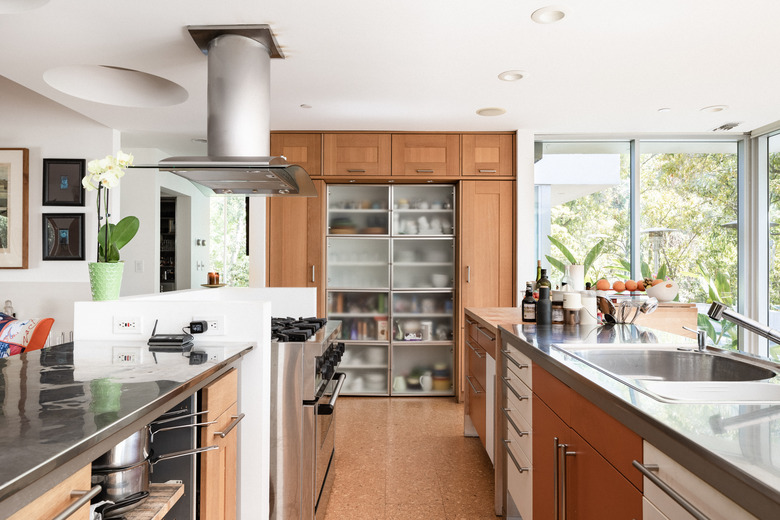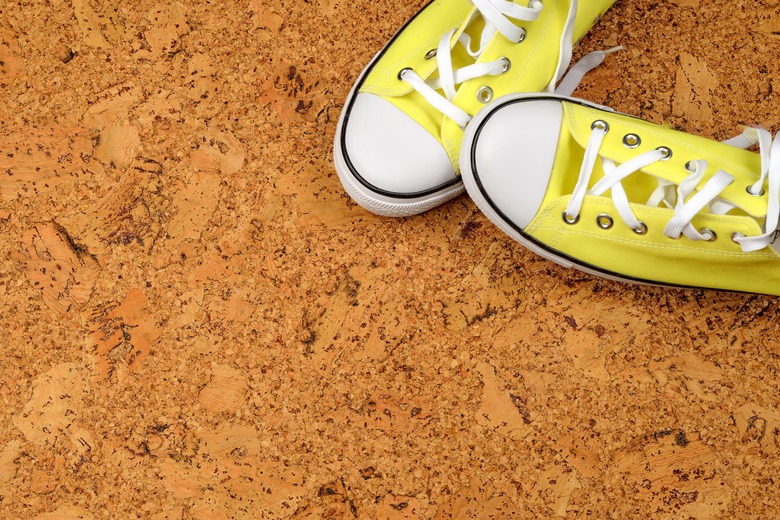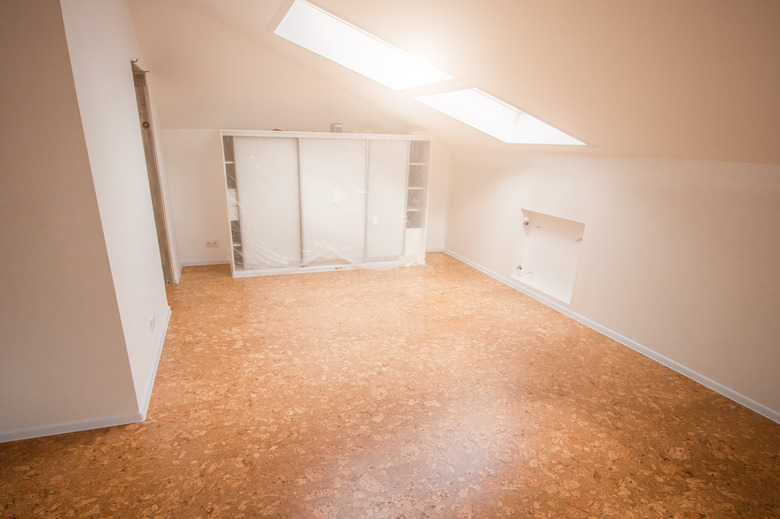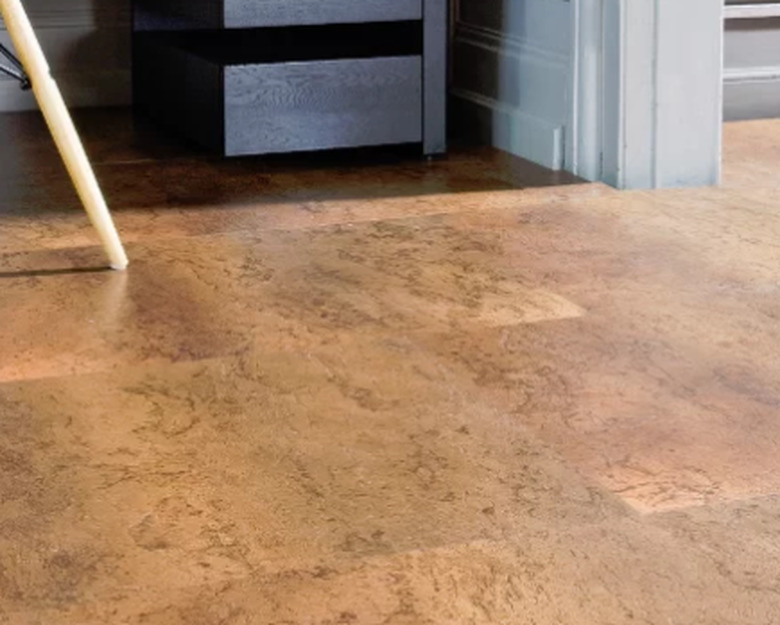Cork Flooring Tiles: What You Need To Know
If you're thinking about updating the floors in your home, then cork flooring tiles can be a great option. This ecofriendly material not only looks like you're walking on beautiful wine corks but actually has a ton of excellent benefits for your family and your home. Before investing in and installing cork flooring tiles, though, it's important to learn the basics.
What Are Cork Flooring Tiles?
What Are Cork Flooring Tiles?
According to Green Building Supply, cork flooring is a type of flooring that's made of natural cork, which comes from the bark of the cork oak tree. This tree can be found in the Mediterranean, primarily throughout Portugal and Spain. Though you may recognize this material as being used mainly for the corks of wine bottles, the bark of the cork oak tree actually has many other uses, including flooring.
Like other types of wood, cork flooring tiles come in different grain patterns from the veneering process, which can provide a nice aesthetic for your floor. Cork flooring tiles make for lightweight, sustainable flooring that's easy to maintain and holds up just as well as any other type of wood flooring. Best of all, the costs are very reasonable, and installation does not require a lot of labor.
How Are Cork Flooring Tiles Made?
How Are Cork Flooring Tiles Made?
Before using natural cork flooring in your home, you may be curious as to how cork tiles are made. After about two decades, the cork oak tree has a thick bark, which farmers are able to cut without damaging the tree. This bark grows back on the cork trees, and the bark that was taken from the tree is peeled off in strips (called "stripping") before being shipped to a mill, where it's veneered.
Cork can also be agglomerated, which means pieces of the cork wood are glued together to form larger pieces. By putting together layers of cork that have been veneered over layers of cork that have been agglomerated, you ultimately get strong cork flooring planks that last for a very long time and won't start curling around the edges like types of cork in cork flooring can do.
Today, there are essentially two types of cork flooring tiles you can use:
- Engineered floating floors: This much more modern and simple method uses a top layer of veneered cork, a middle layer of high-density fiberboard and a bottom layer of agglomerated cork. This can come in panels, strips or squares. These are sometimes referred to as "planks" or "floating floor planks," "cork floating floors" or another combination that uses the word "floating."
- Solid cork tiles: Like linoleum tiles or granite tiles, these are squares of cork flooring that you can glue down or place with another adhesive to create your flooring. These are known as "cork tiles."
Read more: What You Should Know About Cork Flooring
Cork Flooring Tiles vs. Cork Planks
Cork Flooring Tiles vs. Cork Planks
Though they may look similar to the average eye, cork flooring tiles and cork planks (cork floating floors) are a little bit different not just in their appearance but in their function and installation process. One of the biggest differences between cork flooring tiles and cork planks is that flooring tiles must be glued or stuck down, whereas the cork planks are clicked together in order to connect with one another. This gives it the name "floating."
Cork flooring tiles, which are generally a cheaper option than cork planks, can be harder to remove than floating cork floor. However, cork flooring tiles are easier to cut to adjust for the room size, whereas floating floors are longer and thus harder to fit into larger rooms or uniquely shaped rooms.
Natural cork tiles also encourage creativity, as you can choose different veneer patterns to arrange. On the other hand, cork planks are more expensive but are easier to remove and are much more insulated and damage resistant than cork tiles.
Pros and Cons of Cork Flooring Tiles
Pros and Cons of Cork Flooring Tiles
There are many benefits to using cork flooring over other types of flooring in your home. The main reason is because it is eco-friendly, making it a great material to use in green building, according to Cancork Floor. Cork flooring provides excellent insulation and a comfortable floor on which to walk that's also very quiet, so it's a way to soundproof parts of your home.
Before deciding whether or not you'd like to use cork flooring tiles, cork planks or another type of flooring altogether, it's important to consider the pros and cons of cork flooring tiles compared to other options.
Pros:
- Easy installation options, like peel-and-stick or another adhesive. These types of cork tiles are easier to replace if they do get damaged.
- Less materials and tools are needed for installation
- Soft underfoot can help with acoustics
- Can increase the value of your home
- Resists insects
- Hypoallergenic, as it resists mold and mildew
- Entirely sustainable sourcing materials
- More affordable than other flooring products
- Generally won't get damaged by pet nails like other wood flooring
- Easy to mix and match options
Cons:
- Installation can be more labor intensive if you're gluing down cork
- If glued down, it will be a challenge to remove them
- The subfloor must be properly prepared beforehand
- Not as well insulated as other types of cork flooring
- Unless your cork flooring is prefinished, you must apply a sealant
- Color can start to fade after some time
- Can start to curl after a long time
Read more: Pros and Cons of Cork Flooring
Price Difference of Cork Flooring Tiles
Price Difference of Cork Flooring Tiles
For many people, home improvement is not even an option if the costs are too high. Luckily, one of the major benefits of cork flooring tiles (especially compared to planks) is that they are affordable.
According to Floor Critics, cork flooring tiles can range between $2 and $7 per square foot. If you look online, you will likely find cheaper prices. For example, a pack of self-adhesive cork flooring tiles with about four to six tiles in a pack is $15.
How to Install Cork Flooring Tiles
How to Install Cork Flooring Tiles
So, you've made the decision to use cork flooring tiles in your home. Now, it's time to install them. You'll need a few materials and tools to get started.
Things Needed
-
Cork tiles (solid 1/4-inch cork) to fit the square footage of your room.
-
Adhesive such as DriTac 5500 (if you're not using peel-and-stick tiles and are using glue-down cork tiles instead)
-
Tape measure
-
Rubber spacers
-
A saw/tile cutter
-
A mask
-
Notched trowel (if you are using glue-down cork tiles)
-
Rubber mallet
-
Tapping block
1. Level the Subfloor
Regardless of the flooring on which you are putting the tiles, make sure the subfloor is smooth and leveled out. This can be done over plywood, hardwood flooring, or concrete subfloors.
2. Measure the Area
Measure the square footage of your bathroom using a tape measure. Floor Critics suggests using rubber spacers a centimeter out from the walls, as cork expands in humidity, and you want to leave enough space.
After ordering your flooring material (make sure you order 5 to 10 percent extra tiles), measure them out on your floor by laying one after the other to complete a row. You will need a saw or tile cutter to cut tile so that they all fit — and make sure to wear a mask while cutting tile or installing adhesives.
3. Apply the Adhesive and Stick
Once you know how many tiles you need and have cut any necessary tiles, apply the adhesive or peel off the back. For glue-down tiles, use a notched trowel to apply an adhesive, such as DriTac 5500, and be sure to give the adhesive enough time to cure.
For peel-and-stick tiles, turn over the tile and stick it where you want it to go. Then tap it in with a rubber mallet to secure it.
Tip
Glue-down cork floor tiles tend to be more reliable than self-adhesive tiles. Self-adhesive tiles can lose their stickiness after some time. For best results, use cork floor tiling in low-moisture areas of your home.




